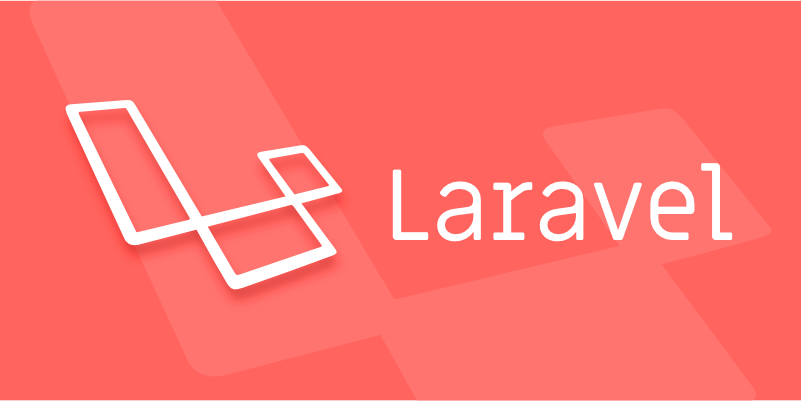Implementing file upload and storage in Laravel requires configuring the file system, processing upload logic, controlling access rights, and regular maintenance. 1. Configure filesystems.php and select local, public or S3 disks; 2. Use request()->file() to obtain files and call store() or storeAs() to store them in the specified directory; 3. Generate access links through Storage::url() or restrict access by restricting custom controllers; 4. Clean redundant files regularly, delete files simultaneously when deleting database records. It is recommended to use queue processing for uploading large files.

When developing web applications, file upload and storage are common needs, especially when dealing with user avatars, documents, pictures and other scenarios. Laravel provides very convenient tools to implement this functionality, including powerful Storage facade and flexible file system configuration.

Configure file system
Laravel uses the config/filesystems.php file to manage file system configuration. You can set the default driver here (such as local , public , s3 , etc.) and define the parameters of different disks.

- Local storage : Suitable for development environments or small applications, and files are stored locally on the server.
- Public access directory : When using the
publicdriver, the file will be stored instorage/app/publicand will be symlinked topublic/storagefor easy direct access. - Cloud storage (such as S3) : suitable for production environments or projects that require distributed storage.
It is recommended to select the appropriate driver based on the actual deployment environment and ensure that sensitive files are not publicly accessed.
Implement file upload function
In the controller, the uploaded file object can be obtained through request()->file() method. Common operations are as follows:

if ($request->hasFile('avatar')) {
$path = $request->file('avatar')->store('avatar', 'public');
} The above code will save the uploaded file to storage/app/public/avatars/ directory and return the relative path. Notice:
- The first parameter is the saved directory name;
- The second parameter is the disk name used, corresponding to the configuration in
filesystems.php; - If you want to customize the file name, you can use
storeAs()method.
Also, remember to set enctype="multipart/form-data" in the form, otherwise the file will not be uploaded.
File access and security control
If you are using a public disk, Laravel will automatically create symbolic links so that the file can be accessed through the URL. For example:
$url = Storage::url($path);
This will generate links similar to /storage/avatars/xxx.png .
However, if you want to control permissions for file access, such as allowing only specific users to download, you can use the following methods:
- Instead of using
publicdisk, the file is stored understorage/app/; - Read file contents through routes and controllers and return them to the user;
- Add authentication logic to the controller to ensure that only authorized users can access it.
Although this method is a little more complex, it can better protect sensitive resources.
Cleaning and Maintenance
Uploaded files may accumulate over time, especially when users frequently upload or delete content. suggestion:
- Clean out expired documents regularly;
- When deleting database records, delete the corresponding files simultaneously;
- For large files or large files uploads, consider using queue asynchronous processing;
- When using soft deletion models, the files should also be marked to be deleted and cleaned regularly.
These practices can help you keep your storage space neat and avoid wasting resources.
Basically that's it. Rational configuration of disks, control access rights, and timely cleaning of redundant files are the key points for uploading and storing Laravel files.
The above is the detailed content of Handling File Uploads and Storage in Laravel?. For more information, please follow other related articles on the PHP Chinese website!

Hot AI Tools

Undress AI Tool
Undress images for free

Undresser.AI Undress
AI-powered app for creating realistic nude photos

AI Clothes Remover
Online AI tool for removing clothes from photos.

Clothoff.io
AI clothes remover

Video Face Swap
Swap faces in any video effortlessly with our completely free AI face swap tool!

Hot Article

Hot Tools

Notepad++7.3.1
Easy-to-use and free code editor

SublimeText3 Chinese version
Chinese version, very easy to use

Zend Studio 13.0.1
Powerful PHP integrated development environment

Dreamweaver CS6
Visual web development tools

SublimeText3 Mac version
God-level code editing software (SublimeText3)

Hot Topics
 What are policies in Laravel, and how are they used?
Jun 21, 2025 am 12:21 AM
What are policies in Laravel, and how are they used?
Jun 21, 2025 am 12:21 AM
InLaravel,policiesorganizeauthorizationlogicformodelactions.1.Policiesareclasseswithmethodslikeview,create,update,anddeletethatreturntrueorfalsebasedonuserpermissions.2.Toregisterapolicy,mapthemodeltoitspolicyinthe$policiesarrayofAuthServiceProvider.
 How do I create new records in the database using Eloquent?
Jun 14, 2025 am 12:34 AM
How do I create new records in the database using Eloquent?
Jun 14, 2025 am 12:34 AM
To create new records in the database using Eloquent, there are four main methods: 1. Use the create method to quickly create records by passing in the attribute array, such as User::create(['name'=>'JohnDoe','email'=>'john@example.com']); 2. Use the save method to manually instantiate the model and assign values ??to save one by one, which is suitable for scenarios where conditional assignment or extra logic is required; 3. Use firstOrCreate to find or create records based on search conditions to avoid duplicate data; 4. Use updateOrCreate to find records and update, if not, create them, which is suitable for processing imported data, etc., which may be repetitive.
 What is the purpose of the artisan command-line tool in Laravel?
Jun 13, 2025 am 11:17 AM
What is the purpose of the artisan command-line tool in Laravel?
Jun 13, 2025 am 11:17 AM
Artisan is a command line tool of Laravel to improve development efficiency. Its core functions include: 1. Generate code structures, such as controllers, models, etc., and automatically create files through make: controller and other commands; 2. Manage database migration and fill, use migrate to run migration, and db:seed to fill data; 3. Support custom commands, such as make:command creation command class to implement business logic encapsulation; 4. Provide debugging and environment management functions, such as key:generate to generate keys, and serve to start the development server. Proficiency in using Artisan can significantly improve Laravel development efficiency.
 How do I install Laravel on my operating system (Windows, macOS, Linux)?
Jun 19, 2025 am 12:31 AM
How do I install Laravel on my operating system (Windows, macOS, Linux)?
Jun 19, 2025 am 12:31 AM
Yes,youcaninstallLaravelonanyoperatingsystembyfollowingthesesteps:1.InstallPHPandrequiredextensionslikembstring,openssl,andxmlusingtoolslikeXAMPPonWindows,HomebrewonmacOS,oraptonLinux;2.InstallComposer,usinganinstalleronWindowsorterminalcommandsonmac
 How do I define methods (actions) in a controller?
Jun 14, 2025 am 12:38 AM
How do I define methods (actions) in a controller?
Jun 14, 2025 am 12:38 AM
Defining a method (also known as an action) in a controller is to tell the application what to do when someone visits a specific URL. These methods usually process requests, process data, and return responses such as HTML pages or JSON. Understanding the basic structure: Most web frameworks (such as RubyonRails, Laravel, or SpringMVC) use controllers to group related operations. Methods within each controller usually correspond to a route, i.e. the URL path that someone can access. For example, there may be the following methods in PostsController: 1.index() – display post list; 2.show() – display individual posts; 3.create() – handle creating new posts; 4.u
 How do I run tests in Laravel? (php artisan test)
Jun 13, 2025 am 12:02 AM
How do I run tests in Laravel? (php artisan test)
Jun 13, 2025 am 12:02 AM
ToruntestsinLaraveleffectively,usethephpartisantestcommandwhichsimplifiesPHPUnitusage.1.Setupa.env.testingfileandconfigurephpunit.xmltouseatestdatabaselikeSQLite.2.Generatetestfilesusingphpartisanmake:test,using--unitforunittests.3.Writetestswithmeth
 What are controllers in Laravel, and what is their purpose?
Jun 20, 2025 am 12:31 AM
What are controllers in Laravel, and what is their purpose?
Jun 20, 2025 am 12:31 AM
The main role of the controller in Laravel is to process HTTP requests and return responses to keep the code neat and maintainable. By concentrating the relevant request logic into a class, the controller makes the routing file simpler, such as putting user profile display, editing and deletion operations in different methods of UserController. The creation of a controller can be implemented through the Artisan command phpartisanmake:controllerUserController, while the resource controller is generated using the --resource option, covering methods for standard CRUD operations. Then you need to bind the controller in the route, such as Route::get('/user/{id
 How do I customize the authentication views and logic in Laravel?
Jun 22, 2025 am 01:01 AM
How do I customize the authentication views and logic in Laravel?
Jun 22, 2025 am 01:01 AM
Laravel allows custom authentication views and logic by overriding the default stub and controller. 1. To customize the authentication view, use the command phpartisanvendor:publish-tag=laravel-auth to copy the default Blade template to the resources/views/auth directory and modify it, such as adding the "Terms of Service" check box. 2. To modify the authentication logic, you need to adjust the methods in RegisterController, LoginController and ResetPasswordController, such as updating the validator() method to verify the added field, or rewriting r






